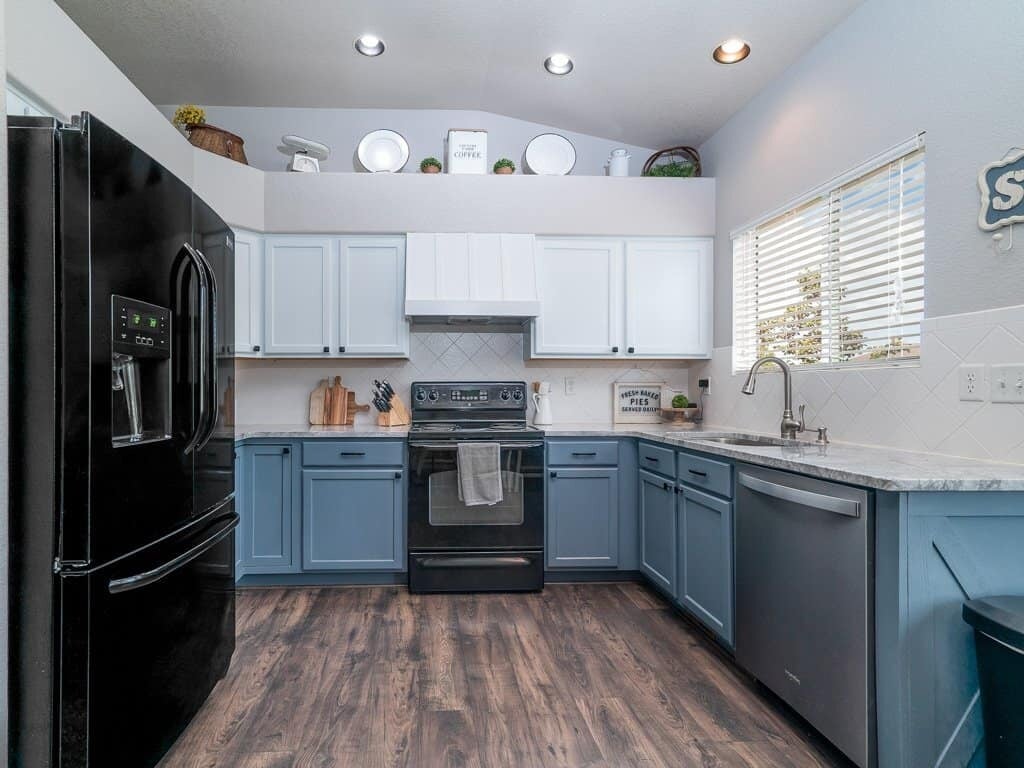The language of mortgage lending can be very confusing. There is a multitude of acronyms that make up a sort of mortgage lending alphabet soup. Terms like APR, ARM, COSI, FHA, VA and much more can make the mortgage lending process sound pretty intimidating. Our goal as REALTORS® is to help simplify and streamline the entire home buying process, including obtaining a mortgage loan. There are two primary mortgage types (Conventional and Government), so it makes sense that there are also two types of mortgage insurance. PMI (Private Mortgage Insurance) for Conventional loans and MIP (Mortgage Insurance Premium) for Government or FHA loans.
So, in the spirit of simplicity, let’s break down one of the most acronym-laden subjects in the industry, mortgage insurance. A PMI policy is provided by private insurance companies while MIP is provided by HUD (Housing and Urban Development).
Although these policies are similar, they utilize different procedures and requirements, so we will talk about them separately.
LTV: Loan to Value Ratio
The primary factor that determines if you are going to need mortgage insurance at all is your Loan to Value Ratio (LTV). This is the ratio of the loan amount you are seeking from the lender in relation to the value of the property you are trying to purchase. As an example: the purchaser wants to borrow $180,000 to buy a $200,000 property. The LTV ratio is $180,000/$200,000 or 90% loan to value of the property. This means the lender has 90% of the risk in the deal compared to the borrower’s 10%. This puts the lender at a substantially higher level of risk than the borrower, so in an effort to minimize their risk, the lender will require a mortgage insurance policy.
MIP: Mortgage Insurance Premium
When you apply for an FHA loan, the lender will need to establish your LTV ratio. FHA loans will require the loan be insured by HUD for every loan no matter what the LTV is. If the LTV is higher than 90%, mortgage insurance is required for the life of the loan. If the LTV is 90% or less, the borrower is required to have mortgage insurance for 11 years.
Additionally, the borrower will be required to pay something called an “upfront fee”, as well as the additional monthly premiums. The upfront fee can be added to the loan amount.
The upfront fee, known as the upfront MIP or UFMIP equals 1.75% of your loan amount. The annual premium paid on a monthly basis is paid in one of two ways. If the LTV is higher than 95%, the rate is 1.35% of your loan amount. If your LTV value is less than 95%, the rate is 1.30% of your loan amount.
Please note that if you have been given an approval for an FHA loan, your MIP is also automatically approved.
Removing Your MIP
FHA mortgage insurance is permanent unless you can refinance it away. You will need to discuss this issue with the relevant agency, and they will give you their list of requirements for dropping the premiums. Generally, you need to have a certain amount of equity in your home for this to happen.
Please note that your insurance is discontinued only if the closing date of your loan is after December 31, 2000, and your case number assignment date is before June 3, 2013. If your case number assignment is on or after this date, your MIP cannot be removed from your monthly payments, even if your LTV value is really low. In this case, your insurance is terminated only when you have paid the full mortgage amount prior to the maturity date.
PMI: Private Mortgage Insurance
The conventional loan version of mortgage insurance is referred to as “Private Mortgage Insurance” (PMI). This policy gets its name because the policy is provided by private or non-government sponsored companies.
For conventional loans, your down payment needs to be 20% or more in order to avoid mortgage insurance. If on the other hand, you are putting less than 20% down, your loan can be insured by any private mortgage insurance provider. MGIC and RMIC are primary providers of this type of insurance.
Unlike MIP, in which there is just one approval for the loan, PMI involves two separate approvals. One is given by the lender and the other by the insurance provider. The possibility exists that you may be approved by the lender, but not the insurance provider. For the loan to close, you need both approvals, and until this is done, you will not receive a full loan commitment.
The rates offered for PMI policies vary with your chosen insurance provider but are generally between 0.3% and 1.15% of your loan amount. Please note that just like the interest amount of your mortgage, your mortgage insurance is also tax deductible. If you cancel coverage, you may be refunded a prorated premium amount.
There are two main types of PMI: the borrower paid the annual premium and the lender paid monthly premiums.
Borrower Paid Annual Premiums
In this type, you have to pay the premium amount for the first year after your loan closes. Once a year passes from this date, you will have to renew the premiums. This will be done at the original rate until the 10th year. In the 11th year, the premium rate decreases to 0.20%. If the previous rate was less than this, it will remain the same.
Fixed Rates and Non-Fixed Rates
Fixed rates are applicable when the first five years of the loan term are comprised of level payments only. If the payments are modified during this period, non-fixed rates will be applied.
The above rates are based on your FICO scores and LTV ratio. Your LTV is calculated first, and then your credit scores are used to determining your classification.
Lender Paid Monthly Premium
When you take advantage of this program, your insurance premium is not added to your monthly payment. Instead, your lender will just pay it as an upfront fee to the insurance provider. However, this program is offered only with certain loan types. Your lender will be able to tell you if your mortgage falls into this category.
A lender paid monthly premium provides coverage as long as the premium amount is being paid. The renewal policy for this program is the same as the annual premium program.
Removing Your PMI
You can eliminate the premium amounts from your monthly payments if the equity in your home is more than 80% of the borrowed amount. Usually, this happens after two years. You can prove this in any of the following ways:
- Your loan is decreased to 78%
- You get an appraisal that shows the appropriate value of your home.
- You provide your lender with a Broker’s Price Opinion from a REALTOR®.
- Refinancing can also help you if you have enough cash to pay a 20% down payment or if your appraisal report proves that you have 20% equity in your home. This option not only cancels your premiums but also provides you with a lower interest rate.
Avoiding Mortgage Insurance Altogether
Mortgage insurance is required only if your down payment is less than 20% of your home value. If you want, you can avoid paying premium amounts altogether. Here are some methods for this.
- This one is really obvious. A down payment that is 20% or greater means you do not require any insurance.
- You can apply for a VA loan, but not everyone meets the requirements.
- Apply for a combination loan of 80/10/10. You have to pay a down payment of 10%. Your first mortgage is equal to 80% of the home value, and the second mortgage amounts to 10%.

